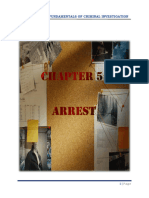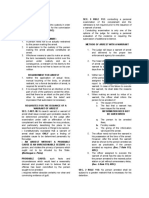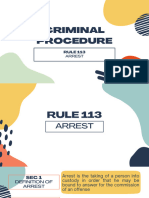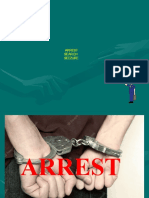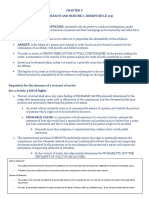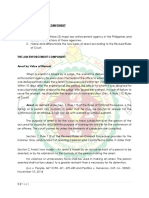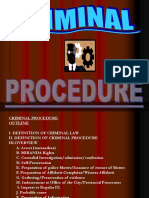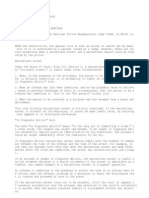0% found this document useful (0 votes)
2 views13 pagesLecture On Arrest
Arrest is defined as taking a person into custody to answer for an offense, and it can be made through actual restraint or submission to custody without unnecessary force. Officers must inform the arrestee of the cause of arrest and their constitutional rights, including the right to remain silent and to counsel. There are distinctions between arrests with a warrant and warrantless arrests, with specific conditions under which warrantless arrests are permissible, such as in cases of flagrant delicto or hot pursuit.
Uploaded by
vergel09lumauigCopyright
© © All Rights Reserved
We take content rights seriously. If you suspect this is your content, claim it here.
Available Formats
Download as PPTX, PDF, TXT or read online on Scribd
0% found this document useful (0 votes)
2 views13 pagesLecture On Arrest
Arrest is defined as taking a person into custody to answer for an offense, and it can be made through actual restraint or submission to custody without unnecessary force. Officers must inform the arrestee of the cause of arrest and their constitutional rights, including the right to remain silent and to counsel. There are distinctions between arrests with a warrant and warrantless arrests, with specific conditions under which warrantless arrests are permissible, such as in cases of flagrant delicto or hot pursuit.
Uploaded by
vergel09lumauigCopyright
© © All Rights Reserved
We take content rights seriously. If you suspect this is your content, claim it here.
Available Formats
Download as PPTX, PDF, TXT or read online on Scribd
/ 13


















